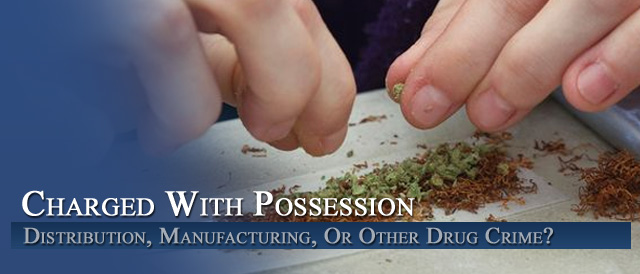




Colorado Drug Crimes Defense: Understanding the Impact of Drugs on the Body
by H. Michael Steinberg – Colorado Criminal Defense Drug Crimes Lawyer.
The Physician’s Desk Reference provides a list of over 4000 drugs.
EVERY entry includes side effects and adverse interactions with other drugs that are toxic in nature.
Further, comparative drug education materials describe the toxic effects of drugs: “Tips for Teens” flyers on tobacco, inhalants, club drugs, cocaine, steroids, heroin, etc. all describe these drubs as being toxic and “can kill you.”
Sequence of effects
The science behind the cellular response to drug dosage is quite complex. Every drug submitted for regulatory approval through the FDA is studied within a well-defined “pharmacological dose response curve” that defines the small, tightly controlled range of clinical or therapeutic dosages. It is also known that either within or outside this range that the first low-dose effect is stimulation followed by a high-dose inhibition. This also happens to be true of heavy metals and other poisons and of antibiotics.
This phenomenon was identified as early as 1888, and was called the Arndt-Schultz Law. A paper published in Science (Vol 302, 17, October 2003) states “The [cellular] receptor for a specific compound tends to come in two kinds: stimulatory or inhibitory.
When the concentration of the drug is low, the stimulatory type of receptor is more likely to be activated; at higher levels, inhibition takes over. Opiates work this way, for example.
Standard literature on drugs reports repetitively this similar sequence with major drugs of abuse and alcohol. As example from the NIDA Research Report Series:
Cocaine: “Short Term Effects of Cocaine:
Increased energy, decreased appetite, mental alertness, increased heart rate and blood pressure, constricted blood vessels, increased temperature, dilated pupils: “Long Term Consequences: Addiction, irritability and mood disturbances, restlessness, paranoia, auditory hallucinations: “Medical Consequences: Cardiovascular – disturbances in heart rhythm, heart attacks; respiratory – chest pain, respiratory failure; neurological – strokes, seizures and headaches…” etc. (pg 5)
Inhalant Abuse:
“Short and Long-Term Effects: Although the chemical substances found in inhalants may produce various pharmacological effects, most inhalants produce a rapid high that resembles alcohol intoxication with initial excitation, then drowsiness, disinhibition, lightheadedness, and agitation. If sufficient amounts are inhaled, nearly all solvents and gases produce anesthesia, a loss of sensation and even unconsciousness.”… “Dizziness, drowsiness, slurred speech, lethargy, depressed reflexes, general muscle weakness, and stupor are other possible effects.” (pg 5)
Heroin Abuse and Addiction:
“Immediate (short-term) effects:…Abusers typically report feeling a surge of pleasurable sensation, a ‘rush.’ The intensity of the rush is a function of how much drug is taken and how rapidly the drug enters the brain and binds to the natural opioid receptors….After the initial effects, abusers usually will be drowsy for several hours. Mental function is clouded by heroin’s effect on the central nervous system. Cardiac function slows. Breathing is also severely slowed, sometimes to the point of death.”
Drug Metabolism: The Merck Manual Chapter 11 states:
“Drug distribution refers to the movement of drug to and from the blood and various tissues of the body (for example, fat, muscle, and brain tissue) and the relative proportions of drug in the tissues.
“After a drug is absorbed into the bloodstream, it rapidly circulates through the body; the average circulation time of blood is 1 minute. As the blood recirculates, the drug moves from the bloodstream into the body’s tissues.
“Once absorbed, most drugs do not spread evenly throughout the body. Drugs that dissolve in water (water-soluble drugs), such as the antihypertensive drug atenolol, tend to stay within the blood and the fluid that surrounds cells (interstitial space). Drugs that dissolve in fat (fat-soluble drugs), such as the anesthetic drug halothane, tend to concentrate in fatty tissues. Other drugs concentrate mainly in only one small part of the body (for example, iodine concentrates mainly in the thyroid gland), because the tissues there have a special attraction for and ability to retain (affinity) the drug….
“Some drugs accumulate in certain tissues, which can also act as reservoirs of extra drug. These tissues slowly release the drug into the bloodstream, keeping blood levels of the drug from decreasing rapidly and thereby prolonging the effect of the drug. Some drugs, such as those that accumulate in fatty tissues, leave the tissues so slowly that they circulate in the bloodstream for days after a person has stopped taking the drug.
“Distribution of a given drug may also vary from person to person. For instance, obese people may store large amounts of fat-soluble drugs, whereas very thin people may store relatively little. Older people, even when thin, may store large amounts of fat-soluble drugs because the proportion of body fat increases with age.”
Many scientific studies exist that describe the redistribution of specific drugs to adipose. The following are a selection of these studies that provide data on illicit drugs:
The Mental Effects of Controlled Substances
Mind as mental pictures:
“According to Kosslyn, mental images really should be understood in two ways: First, from the scientific standpoint, mental images are UNCONSCIOUS SPECIFIC DATA STRUCTURES THAT PLAY THE ROLE OF ‘IMAGES’ IN MENTAL COMPUTATIONS… etc.
Additional References: “Images of Mind,” MI Posner, ME Raichle; and “An Introduction to the Science and Philosophy of Mental Imagery,” JTN Thomas, PhD (www.calstatela.edu/faculty/nthomas/home.htm)
Hallucinogens
“Hallucinogens powerfully affect the brain, distorting the way our five senses work and changing our impressions of time and space. People who use these drugs a lot may have a hard time concentrating, communicating, or telling the difference between reality and illusion.”
Drug Addiction
The World Health Organization definition of addiction is “Addiction means using a substance repeatedly despite knowing and experiencing its harmful effects. The person using the substance cannot control the urge to use it and needs increasing amounts to achieve the effect he craves.” http://www.emro.who.int/mnh/whd/PublicInformation-Part3.htm
How Many Times Does Someone Have to Take a Drug to become an Addict?
No one knows how many times a person can use a drug without changing his or her brain and becoming addicted…
Depletion of vitamin and minerals:
Extant science has shown that alcoholics, for example, are seriously deficient in vitamins A, E, C, B1 (thiamine), and B6. These deficiencies then impede cognition and further “can produce confusion and psychotic symptoms” (as stated by Petrie and Ban in the 1985 issue of the journal Drugs.) Dosages of thiamine plus B12 and folate have been shown to prevent alcohol-induced psychosis, or Wernicke-Korsakoff Syndrome. Depressant abuse addicts have been helped with a basic vitamin package plus amino acids phenylalanine and glutamine. Stimulant abuse patients have been helped with phenylalanine, tyrosine, and glutamine.
Notes indicate that taurine calms down addicts coming off drugs and reduces their upset. Other work with simple orthomolecular treatment, including Calcium and Magnesium as well as other vitamins for the first week of withdrawal and amino acids later, showed rapid improvement in psychological test scores. Many experiments have shown the calming effects of Tryptophan with addicts in withdrawal.
Drugs and Emotions
“Usually neurons recycle dopamine. But methamphetamine is able to fool neurons into taking it up just like they would dopamine. Once inside a neuron, methamphetamine causes that neuron to release lots of dopamine. All this dopamine causes the person to feel an extra sense of pleasure that can last all day. But eventually these pleasurable effects stop. They are followed by unpleasant feelings called a ‘crash’ that often lead a person to use more of the drug. If a person continues to use methamphetamine, they will have a difficult time feeling pleasure from anything. Imagine no longer enjoying your favorite food or an afternoon with your friends.”
Juveniles and Drug Crimes
Research today shows that more 9- to 12-year-olds are using drugs and more are growing increasingly tolerant toward drug use.
The study reveals that these children-who are just in the 4th, 5th and 6th grades-are receiving significantly less information about the dangers of drugs.
National research reveals for the first time that younger children are emulating the attitudes and behavior of their older peers at the worst possible time.
This is particularly significant because these children-most of whom don’t use drugs now-are seeing fewer risks in drugs just as they’re about to move from elementary school to junior high or middle school-where, according to the data, drug experimentation rates skyrocket.
Fewer Children View Drugs as Dangerous
A study of 12,292 children, teens and parents shows that today’s 4th, 5th and 6th graders are less likely to consider drugs harmful and risky; more likely to believe drug use is widespread and acceptable; more report having friends who use illicit drugs; and fewer report receiving information about the dangers of drugs from a variety of different sources.
The normalization of illicit drugs that has occurred among teenagers is now trickling down to younger children. With children less resistant to drugs as they leave the relative safety of elementary school-and enter middle school, where their peers are older and drugs are much more a reality-the implications for the future are not encouraging.
New Friends, New Pressures, New Peer and Social Norms
The study also found that the number of children who report experimenting with marijuana increases dramatically from 6th grade, where children remain in the relative safety of elementary school, to junior high or middle school, where children are exposed to a variety of new social and peer norms.
The Threshold Age
Age 15 is the critical threshold. As teens age, their proximity to drugs in-creases and their antipathy to drugs decreases. Drugs become perceived to be more benign, less of a “big deal”; they are ubiquitous, easier to get; there is less fear of using drugs, and such behavior comes to be regarded as “normal.”
These changes occur continuously from ages 12 to 17, increasing the teen’s risk of drug and substance abuse the older he or she gets. But there is a clear difference in the data between the pattern of responses of those 14 and under, and those 15 and older. This is the threshold age-roughly coinciding with the start of high school-at which all the risk indicators take a jump.
One implication of this finding is that we have to talk to teens of different ages in different ways. This may seem like an obvious point, but the decision to use illegal drugs will probably be made between ages 15-17, and discouraging drug use at these ages is a very different task from trying to inoculate a 12-year old. Further, there is no reason provided by our data to be sanguine about the power of a broad drug inoculation strategy aimed at younger kids.
Other Articles of Interest:
- FAQ: Colorado Drug Crimes Law and Defenses – The Role of Basic Pharmacology – Rates of Drug Absorption – Individualistic Responses – Tolerance
- FAQ : Colorado Criminal Defense Drug Crimes Topics – The Club Drugs
- Colorado Strip Searches In Drug Cases – The Law – Know Your Rights – Colorado Criminal Defense
- Colorado Drug Probation Testing – Oral Swab Drug Tests – Are They Accurate?
- Helping The DA To “See” The Impact Of Colorado Drug Convictions And College Applications












